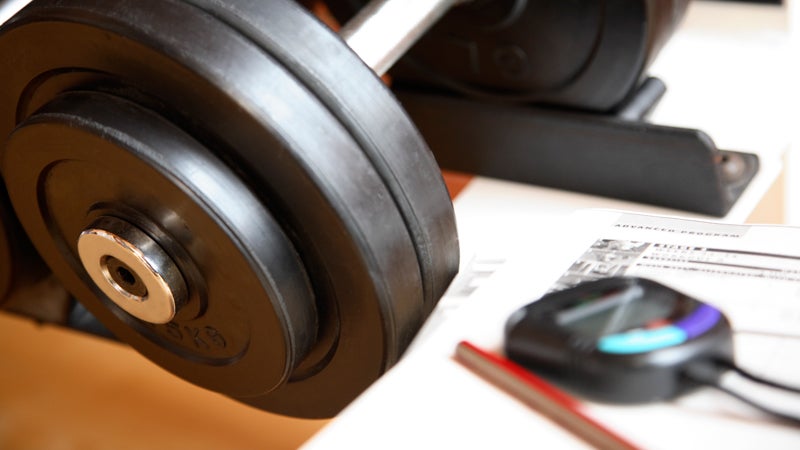The stopwatch is a big part of CrossFit and other “functional fitness” circuit-training programs: Timed workouts (and WODs, in CrossFit speak) allow athletes to measure their performance against fellow gym-members and their own previous sets. But there’s a time and place for the stopwatch, most experts say, and it’s not always the best tool to monitor your progress.
“Focusing on time inevitably takes attention away from your form, which is critical to the effectiveness of your workoutÔÇöespecially in weight training, where improper alignment can be dangerous,” says Jimmy Minardi, a personal trainer and fitness coach at on Long Island, New York. “Quantity over quality equals injury, period.”
Greg Everett, head coach of the national-medalist Catalyst Athletics weightlifting team, agrees. “We can pretend that our clients are competing against each other in some kind of sport, but their times are meaningless unless all of your clients are duplications of the same person with the same abilities using the same weights,” he writes on . Plus, he adds, a good training program should be constantly varied. “If you never repeat a workout, what utility is a time? There’s nothing to compare it to.”┬á
A stopwatch also doesn’t take into account what’s going on with your body on a day-to-day basis, says Minardi, like how much sleep you got or whether you’re feeling under the weather. The best way to accurately track your progress when circuit training, says Minardi, is to use a heart-rate monitor. “It gives you instant biofeedback, which is the only real way to track exertion.”
So when should you use a stopwatch? If your workout is supervised by a professional, timed interval training can be quite effectiveÔÇöespecially if you’re preparing for a competitive event, says Minardi. In this situation, your coach can detect inconsistencies and remind you of form and posture; he can also man the clock himself, so that you can focus on your workout. Likewise, Everett times his trainees about once a month during actual CrossFit WODs. “In that case, a time is actually useful for clients to compare with previous performances,” he writes.
Bottom line: If you’re training for a timed competitive event and you’re working with a coach or trainer, a stopwatch can be a valuable tool. But if you’re unsupervised or think you could be sacrificing form just to beat your past times, stopwatch-training gets a don’t-try-this-at-home warning, says Minardi. “It’s not worth risking injury for your ego.”


